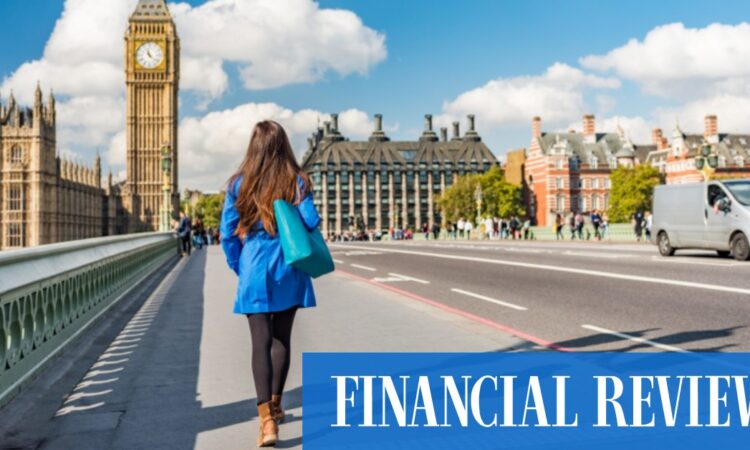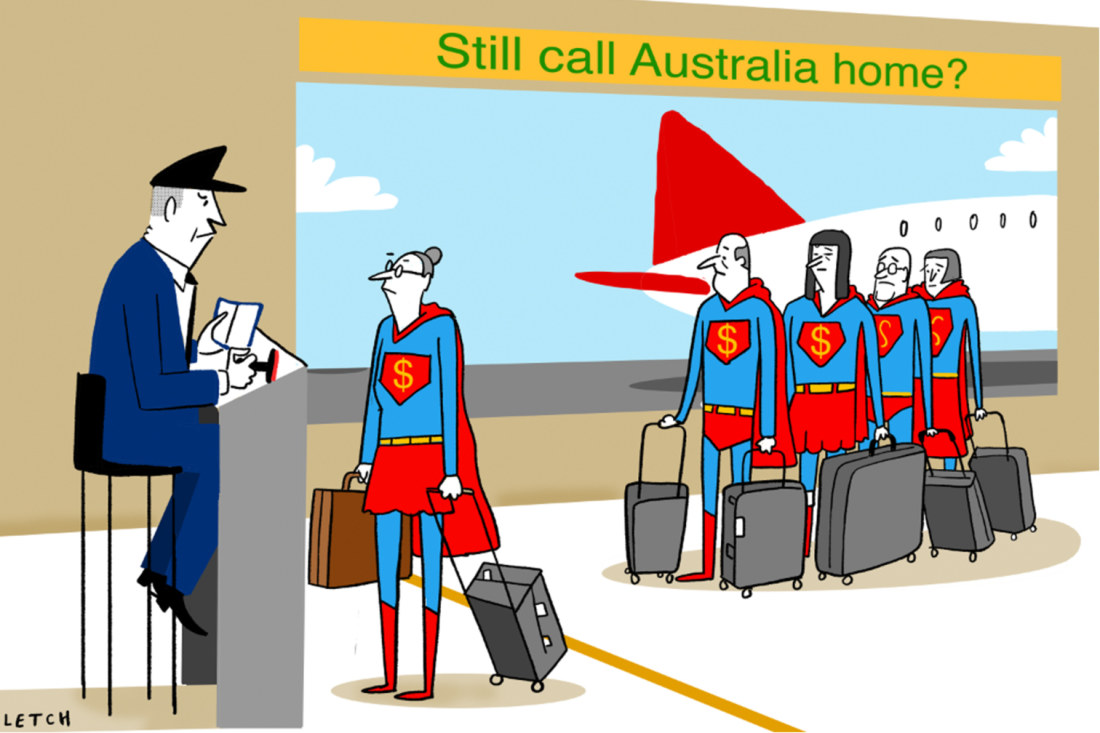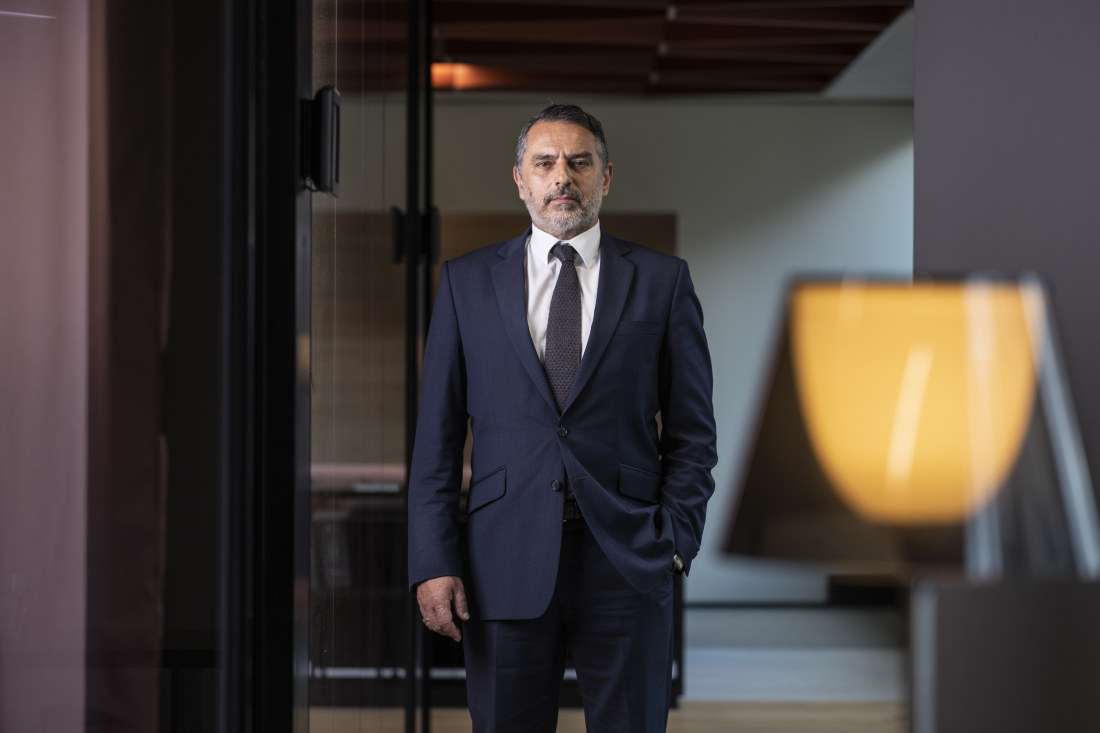
O’Connell says rising immigration is increasing demand for advice and increasing risks for those who fail to check the experience and qualifications of their advisers, both in Australia and the country where the money is domiciled.
“There are four or five ways to access super money from the UK. But before deciding on how to do it, you need to understand the impact of those choices,” he says.
Potential risks are highlighted by the Australian Securities & Investments Commission freezing the funds and assets in October of Brite Advisors, a global company that manages super assets and transfers.
The court order was awarded because the company’s “current financial position is unknown” and it failed to lodge its financial statements and auditor’s report for the financial year to June 30, 2022. The company operates out of multiple countries, including the US, the UK, Hong Kong and Australia. The company did not respond to questions about the value of assets and the number of clients affected.

Those who fail to comply with transfer rules could be taxed by the ATO at their top marginal rate of up to 47 per cent plus penalties from other countries. Simon Letch
Recent weakness in the Australian dollar compared to other key currencies – such as the US dollar, UK sterling and the euro – means it is a “fantastic” time to consider conversions, says Thomas Averill, managing director of currency specialist Rochford Group.
The Australian dollar has, however, gained ground against key currencies in the past week.
Chris Balalovski, a partner with consultancy BDO, says: “Transferring super assets from overseas is a complex area of the law that can involve detailed discussions with overseas regulators and service providers.”
Advantages of bringing super home range from reducing currency risk and lowering costs through to the convenience of having money in one place and, under Australian law, being protected from bankruptcy and defamation claims.
Leaving the money overseas, such as the UK and Europe, and drawing it down upon retirement could result in tax rates of up to 50 per cent, says O’Connell. “There’s no way of getting away from tax,” he says.
But transferring super lump sums between countries can be tricky because of strict rules about using compatible schemes, potential legal complexities and different tax treatments.
Currencies can also be very volatile and there is no guarantee current rates will be the same when the money is exchanged for Australian dollars.
Transfers from the UK
Cameron Howlett, principal of Independent Wealth Partners, says: “Bringing back UK pensions can involve significant levels of complexity, tax implications and headaches, while many UK schemes are not quick to act on an instruction to transfer, which can sometimes take up to 12 months.”
How to do it:
- Those planning to bring funds back to Australia cannot already be receiving a defined benefit annual UK pension, must be over 55 but under 75 and use a Qualified Registered Overseas Pension Scheme (QROPS), which are comparable to a self-managed super fund (SMSF). The Australian Expatriate Superannuation Fund (AESF) is the only retail super fund available to accept a transfer from the UK. The alternative is an SMSF.
- Those transferring more than £30,000 ($56,000) from a defined benefit scheme are required to seek advice from a UK-regulated pension transfer specialist before making the move.
- Australian authorities require any transfers to local super funds to stay within super contribution limits. This means having less than $1.9 million in super and complying with the annual non-concessional (after-tax) contribution limits of $110,000 in any year, or $330,000 over three years using the bring-forward provisions. “This usually requires a staggering of payments,” says Howlett. “This can be problematic as the ATO requires the member to close the scheme from where the funds have come from, so you need to arrange an alternative UK scheme to hold the balance.”
- There are also tax implications. The earnings of a UK pension transferred to Australia within six months of either having foreign employment terminated or becoming an Australian resident for tax purposes will not be subject to Australian tax. Those who leave it for more than six months will be liable for 15 per cent tax on the investment growth calculated from the date of becoming an Australian tax resident to the date the UK pension was transferred to Australia.
- Those who fail to comply with transfer rules could be taxed by the ATO at their top marginal rate of up to 47 per cent plus UK penalties.
- Alternatively, it is possible to switch to a UK self-invested personal pension (SIPP), which is comparable to an Australian retail super fund or SMSF. The costs vary between providers who will charge set up and ongoing fund management and administrative fees. O’Connell says: “The choice depends on circumstances. It all comes down to people’s objectives. Some choose them because they prefer their assets to be managed by someone they know.”
- There are a limited number of UK pensions that provide multi-currency options, including Australian dollar-denominated funds.
US traps
Balalovski says some funds in the US, such as 401K plans and individual retirement accounts (IRAs), do not meet the Australian definition of a super fund and cannot be directly transferred to an Australian super fund.
He says the US funds fail Australian super standards because members can withdraw funds before they reach retirement, such as for medical expenses or tuition fees.
This means a US fund could be treated as a foreign trust in Australia, with withdrawals treated as a capital distribution and taxed at an individual’s marginal tax rate of up to 47 per cent.
These liabilities can arise even though contributions were made and investment returns earned while the expat was a non-resident of Australia.

You need expert guidance, says Chris Balalovski. Louie Douvis
Balalovski warns those planning a transfer from the US need to establish what conditions apply with the product provider and regulator.
“Expert advice is required on how to reduce tax liability in Australia and the US on withdrawal and transfer,” he says.
How to do it:
- If a US citizen transfers their 401K or IRA funds to Australia before the age of 59.5, they are likely to pay 10 per cent tax in the US.
- Non-US citizens may be able to escape 30 per cent US withholding tax on their transfers to Australia through the US/Australia double tax agreement.
- The ATO typically considers funds transferred from US pension funds as non-concessional contributions. This means that there’s an annual cap of $110,000 plus a bring-forward of two years, giving a total lump sum value of $330,000 for a non-concessional bring-forward contribution that could potentially be transferred in a year.
Moves from Singapore and Hong Kong
Potential tax problems are similar to the US because schemes frequently do not meet the definition of an Australian super fund. For example, some Singaporean schemes allow withdrawals for non-retirement issues, such as personal accommodation, which means they may be treated as a trust by Australian tax authorities, rather than super.
“That would mean you cannot directly transfer (into an Australian super scheme), and distributions from a trust potentially have huge negative consequences for capital and earnings,” says Balalovski.
How to do it:
- The Central Provident Fund in Singapore and Mandatory Provident Fund in Hong Kong – both compulsory retirement savings schemes – don’t meet the definition of a super fund under Australian law. This means that transfers directly from these funds into Australian super funds can’t be made.
- Similar to the treatment of transfers from the US, the funds exceeding employee and employer contributions which are transferred from the Central Provident Fund and Mandatory Provident Fund may be subject to tax in Australia at marginal rates.
Eight-point checklist
- Currency risk and exchange commission can be managed by setting up a foreign exchange account and transferring money into Australian dollars at the right time.
- Get experienced, regulated financial advice before transferring. The schemes can be complex. This might entail getting advice in the origin country and Australia.
- Check fees and commissions. Advisers say charges for advice and transfer could cost around $10,000.
- Check potential tax for the Australian super fund. For example, a 25 per cent tax will apply when a QROPS scheme and member are not resident in the same country.
- Check out how new funds, such as QROPS, invest your money. Do you have any choice in the investments and are you concerned about the potential risk?
- Make sure you are not worse off by transferring the pension. Would you be better off keeping it in the foreign country until retirement?
- Tax laws vary between countries and could change before the money is transferred. Seek experienced, expert advice.
- Complexities increase for those attempting to switch defined benefit schemes, which involve an employer guaranteeing an income based on a member’s final salary, spousal benefits and independent of investment performance.



